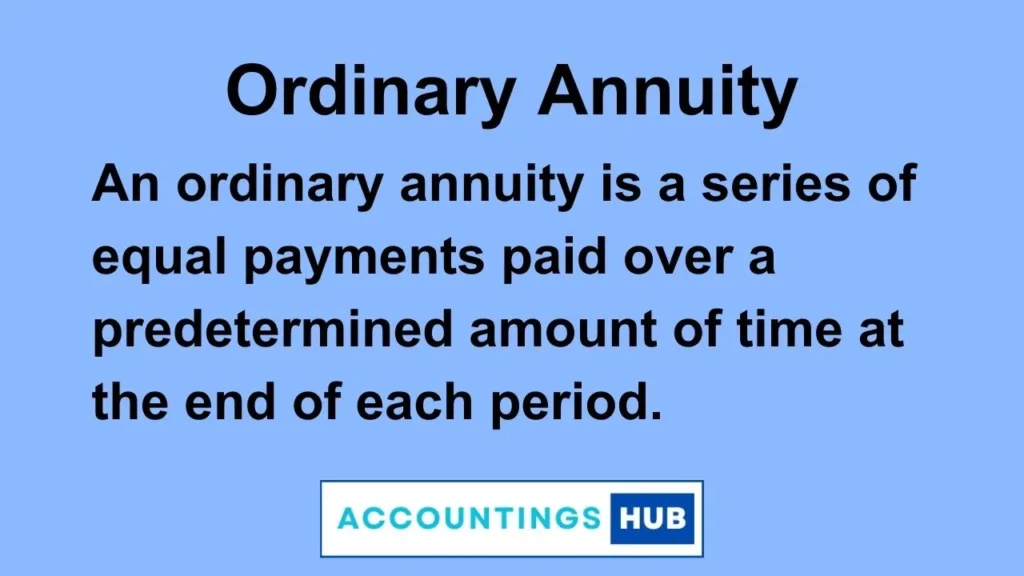An ordinary annuity is a series of equal payments paid over a predetermined amount of time at the end of each period. In reality, payments under an ordinary annuity are often made monthly, quarterly, semi-annually, or yearly, however, they might be made as frequently as once per week. Despite being connected, these two schedules of payments are not the same as the financial instrument known as an annuity.

How Ordinary Annuity Works
Bond interest payments, which are often delivered semi-annually, and quarterly dividends from stocks with steady payments for years are examples of ordinary annuities. The current interest rate is depending on the present value of a typical annuity.
Due to the time value of money, the present value increases with falling interest rates and decreases with rising interest rates. This is so because the annuity’s value is determined by the return that your money could earn elsewhere. The value of an annuity decreases if you can find a greater interest rate elsewhere.
Present Value
The present value of the annuity is the current value of a series of future cash flows or payments made at regular intervals, assuming a specified discount rate or interest rate. It represents the total value of those future cash flows as of today. The formula for calculating the present value of an ordinary annuity is:
P.V = PMT [ 1 – ( 1 + i)-n/i]
P.V. is the present value
PMT is the periodic payment or cash flow (e.g., monthly rent or loan installment).
r is the interest rate per period
n is the total number of periods.
Example
If an annuity pays $50,000 per year for five years and the interest rate is 7%, the present value would be:
- Present Value = $50,000 x ((1 – (1 + 0.07) ^ -5) / 0.07) = $205,010
Future Value
The future value of an ordinary annuity compounds forward a series of equal cash flows or payments at the end of each period to a specified future point in time. The formula for calculating the future value (FV) of an ordinary annuity is:
F.V = PMT [(1 + i )n – 1/i]
F.V. is the future value
PMT is the periodic payment or cash flow (e.g., monthly rent or loan installment).
r is the interest rate per period
n is the total number of periods.
Example
John Doe decides to invest $125,000 per year for the next five years in an annuity they expect to compound at 8% per year. Calculate Future Value
Future value=$125,000×(1+0.08)^5−1)/0.08=$733,325
Frequently Asked Questions
What is a simple and ordinary annuity?
There are two important terms of annuities – ordinary and simple. Ordinary Annuity: Has payments at the end of each time interval. There is no payment at the start of the term of the annuity. In a Simple Annuity, the Frequency of the payment is the same as the frequency of the compound interest.
Why is the ordinary annuity important?
An ordinary annuity can be a useful tool for budgeting, meeting financial obligations, and planning for retirement. However, the payments are made at the end of each period, such as every month or every year, for a fixed number of periods.
What is a perpetual annuity and ordinary annuity?
Ordinary Annuity: The payment or deposit of cash occurs at the year. Annuity Due: The inflow or outflow of cash occurs at the beginning.
Perpetuity: The annuity which is everlasting. Others: Some other annuity types of annuity are fixed annuity and variable annuity.
